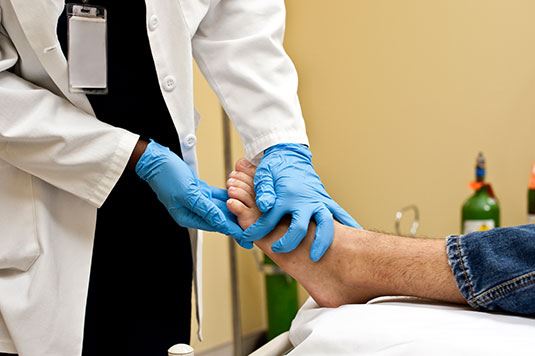
Open Accessibility Menu
Hide
dfh
Close Alert
Close Alert
Author: Sarah Wartman, MD
Specialty:
Vascular Surgery

It’s estimated 6.5 million Americans are affected by chronic wounds – wounds that don’t follow the expected pattern of healing and show little or no signs of improvement after a month’s time. More than an inconvenience or eyesore, those affected by non-healing wounds can face chronic pain, loss of mobility, depression and anxiety, as well as increased risk of hospitalization, amputation and death.
The most common types of chronic wounds are ulcers that fall into one of five categories:
Chronic wounds are the result of something interrupting the healing process. Some of the most common causes of non-healing wounds include infection, swelling from fluid buildup, and poor circulation. Each year, Americans spend over $25 billion in the treatment of these wounds and related complications – and that doesn’t include the treatment of underlying conditions like diabetes and peripheral artery disease. Addressing these underlying conditions is important to prevent future wounds and to ensure active wounds do not become a chronic problem.
Due to the complexity of wounds and their underlying conditions, a multidisciplinary physician panel is essential to adequately care for and, ultimately, heal these wounds.
At the Washington Center for Wound Healing and Hyperbaric Medicine, it’s all hands on deck to treat these stubborn wounds. Our team consists of infectious disease specialists, podiatrists, vascular surgeons, plastic surgeons, general surgeons, internal medicine physicians and wound specialist nurses and technicians. Outside of the Center, we’ll often call upon the expertise of other specialists and subspecialists to help a patient manage these underlying conditions. These can include primary care providers, endocrinologists, cardiologists or even dietitians.
Every patient is unique, so it stands to reason that not every wound is alike. As such, we tailor treatments to each patient’s specific needs. Some of the therapies and approaches that may be employed include:
Patients should be vigilant about getting care if a wound isn’t healing as expected. A patient without any known vascular issues or diabetes can usually wait a few weeks to see if it improves. However, if you do have one of these conditions, it’s important to be proactive and see your doctor even before your wound is considered chronic.
Other ways you can help the healing process include:
To learn more about the life- and quality of life-saving work that we do at the Washington Center for Wound Healing and Hyperbaric Medicine, visit the Washington Hospital website.
Posted July, 2019